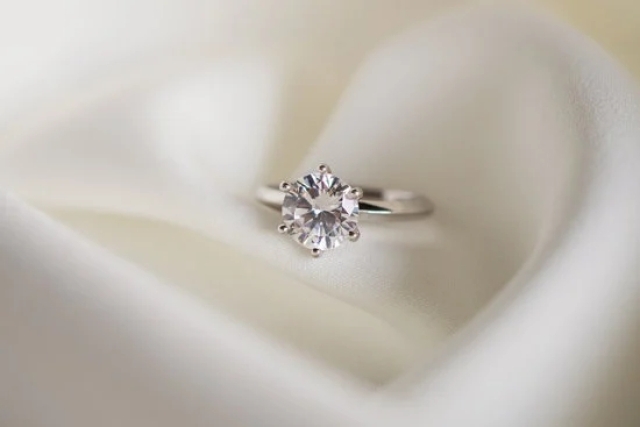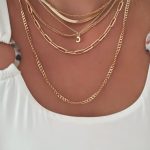Broken glass jewelry can be a heartbreaking occurrence, yet it doesn’t have to stay that way. Repairing broken jewelry is often cheaper than replacing the original and can help keep special pieces safe and manageable when tendered with care.
Learning how to repair broken glass jewelry is an essential tool for those who have cherished heirlooms and delicate creations made from glass or crystal. Not only does it probably save you money in the long-run, but it also helps reduce waste in landfills as it’s much better for the environment.
Steps To Repair Broken Glass Jewelry
First, assess the damage. It’s important to really take a look at the broken piece and determine what specifically needs fixing. If there are missing pieces or shattered shards, evaluate if any of them are salvageable before discarding the remainders of the necklace or bracelet.
Gather supplies that will help with reassembly – jewelry glue, fine tweezers, nippers, wire cutters – ensuring all items used are clean beforehand to prevent further contamination of dirt and other particles which may cause future problems down the line. Clean both surfaces to prepare them for gluing; then carefully fit each separate piece together (if possible), forming a close approximation of its original shape when pieced together properly.
A toothpick may be used to apply a thin layer of glue on both sides of any cracks and broken pieces being fitted back into place.
Conclusion: Ensuring Long Lasting Repairs
Once put together, use some type of clamping material or tool to tightly hold everything in place while waiting for it to dry completely – typically 24 hours depending on the type of adhesive being utilized as well as other factors such as humidity in your home for example. Once dry, double check that all pieces remain firmly sealed together so that your broken item can last long beyond this repaired state without coming apart ever again.
The art of how to repair broken glass jewelry is often challenging but thus provides satisfaction upon its successful completion when handled delicately and with precision.
Assemble the Supplies
Obtaining the right tools and supplies for repairing broken jewelry can be difficult to source, especially if you don’t know where to start. However, there are a few key places that you should check out.
The first place to look is your local craft store. Many carry basic tools, like tweezers, pliers and solder paste that are perfect for doing repairs. They also have small parts like jump rings and earring backs if you need to fill in some of the missing pieces from your jewelry project.
In addition to this, many of these stores also offer repair kits containing basic tools. This can be a great way to get everything you need in one convenient package.
Another great option is online stores specializing in jewellery-making and beadwork supplies. These websites offer more variety when it comes to materials and tools such as micro torches, polishing supplies and setting stones into place with epoxy clay or glue.
These items may not be available or easy to find at a local store so this is a good alternative if you’re having trouble finding what you need there. Another great thing about shopping online is being able to compare prices between different websites so that you can make sure you’re getting value for your money on top quality materials.
Lastly, Etsy shops often have specialty findings and products specifically designed for jewelry making and repairs. You can usually find unique shapes, colors and styles of wire, beads and components here that may not be available elsewhere – perfect for customizing existing pieces or completing new projects altogether. The amount of creativity available through Etsy shops has no limit so always shop around before purchasing anything for any type of repair project.
Clean and Inspect the Jewelry
Broken glass jewelry can be a heartbreaking and relatively expensive thing, so it’s important to find the most efficient way to repair it. The best place to start is by cleaning and inspecting the jewelry carefully.
Make sure that all debris and dirt are removed before proceeding with any repairs. This will also help you determine what kind of repair is necessary for the piece, as any unnecessary repairs can cause further damage or be a waste of time (and money).
Once the jewelry has been cleaned and inspected, you can assess how badly it is damaged. If there are only a few pieces missing from the necklace or bracelet, then you may only need simple glueing techniques to fix it. However, if there more severe damage on larger areas of the jewelry then you will have to use more complicated techniques such as soldering or even replacing broken pieces entirely with new ones if required.
Before attempting any repairs on your own, make sure you have the appropriate tools and materials needed in order to complete them without causing any additional damage. You should also research whether professional repair services could be an option to save time, effort and potential future problems with your beloved glass jewelry piece. The more knowledge you acquire about repairing glass jewelry before hand, the easier time you will have fixing future issues that may occur.
Remove and Replace Broken Pieces
The most common way of repairing broken glass jewelry is to remove the broken pieces and replace them with new ones. For example, if the glassware part has shattered, you would want to collect all of the fragments and glue them back together.
This process can be done with any kind of household glues such as super glue, epoxy, or special adhesive made specifically for joining glass pieces. You will also want to take into account where each piece should be located relative to the others so that the dimensions match up in order for your piece to look like its original form.
It may be beneficial to practice on a spare item or scrap material until you are familiar with how well your chosen adhesive holds off against wear and tear before attempting a repair on an important piece. It is worth noting that some adhesive is not made for use with certain materials, such as ceramic or metal, so make sure that you are mindful of this before applying it onto your project.
It is also recommended that you use protective gloves when handling any kind of delicate glass items as they can leave cuts and minor lacerations if handled incorrectly.
If replacement parts have been identified but are difficult to source, creating one can be a viable alternative method. Utilizing a mild steel caster wheel, you can mold and shape the spun alloy clay into complex designs which replicate parts that don’t exist in stores or workshops anymore.
After baking at high temperatures for several hours, it gives an exact replica without compromising its structural integrity or durability too much over time; although regular cleaning cycles should be carried out using metal polish to keep it from oxidizing despite being made from stainless steel.
Hang, Stick or Glue
Glass jewelry is often a beautiful and delicate accessory that adds style and class to any look. However, its fragile construction also means it’s susceptible to breaking; pieces might crack, chip, or shatter as they hit the floor or in the course of being worn.
Fortunately, these pieces can be repaired with meticulous effort and patience. Repairing broken glass jewelry requires an understanding of the types of repair needed so that you can use the right materials to restore your favorite trinkets without further damaging them.
The first technique to consider when repairing glass jewelry is hang repairs. Hang repairs involve attaching two or more breakable parts back into place, such as pieces of a pendant or two sides of a bracelet.
To do this properly you need either wire, thread or twine – depending on the strength required for each piece detl – threaded through each section, then tied into a small knot at either end for extra security. This enables the parts to remain joined even when subject to added wear and tear during their everyday use.
An alternative method is glue repairs, which involve working with general purpose adhesives such as Araldite epoxy resin or PVA glue. Glue repair requires applying small amounts of adhesive across the cracks between sections of your jewelry piece and allowing it time to dry before wearing again.
Using superglue may seem simple enough, but if not done correctly there is potential for further damage to your jewelry and it can become stuck permanently due to unsuitable materials used in gluing – never attempt putting superglue in between deliate tiny components such as stud earrings because there isn’t sufficient wiggle room once applied.
Finally stick repairs are best suited for flat jewelry items that have cracked along their surface like rings or pendants – here the aim will be fixing them back together using tweezers in order pinch together slight instead of having any fillers added in order maintain original shape/coloring throughout process.
This creates an almost undetectable join when worn again as no gap remains visible between shattered areas anymore thanks essentially ‘sticking’ pieces together again – it’s important however not apply too much pressure when doing so because could end up causing some cracks still appear despite your best efforts.
Repair Cracks and Breaks
Repairing broken glass jewelry is often a tricky process. If you are lucky enough to have all of the pieces that comprise your piece, you may be able to use sophisticated glues and techniques to make a strong bond between the two broken halves. First, apply a thin layer of super glue all over the edges where the two halves meet. Once the glue is dry, sand down the surface using fine grit sandpaper until it’s smooth and flush.
Then, apply a layer of Devcon 5 Minute epoxy onto your jewelry and allow it to dry for 2 minutes before positioning both parts together again. Again, press firmly and wait around 30 seconds to ensure that there is an even bond between both parts. This will help strengthen the bond of the join or seam created by repair.
Another important task when repairing broken glass jewelry is strengthening the seams so that they can withstand everyday wear and tear or stress during activities or events. To do this, begin by pressing clear epoxy into crevices along each joint’s seams with a toothpick or similar tool.
Be sure to spread it evenly and fill in any gaps as much as possible before allowing it to dry completely – this could take several hours depending on your chosen adhesive type and product specifications.
Finally, once both steps are complete; inspect your repaired jewelry under magnification tools like a loop if available. If there are any issues regarding weak spots not filled properly with epoxy – then reapply more by following previous steps again until you feel happy with its performance strength. Doing so should help prevent further cracks from forming in future due to strong stressors such as jarring motions or pressure points like clasps & chains being pulled on constantly over time.
Finish Your Creation
Once you have repaired your broken glass jewelry, it’s time to finish the work so that it looks as good as new. To do this, use a microfiber cloth and toothpaste to gently buff away any remaining dirt and smudges.
Start off with small circular motions beginning at one end of the item and working your way around until your entire piece is free from any imperfections. Once finished buffing, take a look to make sure there aren’t any scratches or masks that need to be touched up.
Polishing is a highly important step in bringing back a jewelry item’s shine and luster. Using either metal polish or paste, apply to the entire piece with a soft cloth and begin swirling in circles until the jewelry gets its desired amount of glossiness.
Since metal polishes can be abrasive, be sure not to press too hard on the surface or rub for too long in one area with each stroke. It might also help to clean off any residue from the application once done by dipping the piece into warm water and soap before drying it off with a towel or rag.
The final stage of finishing can involve buffing once again using a felt wheel along with fine wax or polishing compound. This will help reduce scratch marks by smoothing out rough edges while filling gaps left behind by repairs made earlier.
As always, take care not to use too much force if necessary; light pressure is typically best when dealing with delicate jewelry pieces like glass ones. Make sure all areas are covered evenly and wipe off excess material upon completion for an overall polished look that resembles how it was prior to breaking apart.
Treasure the Result
Broken glass jewelry can often be repaired with a few simple steps. With the proper care and maintenance, your broken glass jewelry should remain in great condition for years without further need of repair. By following a few basic guidelines on how to take care of your jewelry, you can ensure that it looks great for many years.
First, you’ll want to keep your jewelry away from moisture or liquids as much as possible, as even slight exposure can cause deterioration of the material over time. This includes avoiding contact with water (like showering or swimming) and perfumes or lotions which can seep in between the pieces and damage them.
Additionally, make sure you always store your jewelry inside an airtight container when not wearing it. This will prevent dust and moisture from cake settling on the pieces and potentially damaging them in the long-term.
The next step would be to safely clean your jewelry. The best way to maintain sparkling finish is to use lukewarm water mixed with dish soap and a soft cloth with circular motions. Make sure not to scrub too vigorously as this could cause scratching of the glass material instead of cleaning it more evenly.
You should also use protective gloves while cleaning if possible, since any acidic oils found in bare hands could affect the color or damage metal settings. After you’ve done washing it off with gentle cleansers, simply rinse everything off for a final sparkle and let dry completely before wearing again.
In addition to washing after wearing, set aside some time once a month for deeper cleaning techniques as well such as using multipurpose cleaners and toothbrushes on specific gunk areas or chemical baths for completely stained pieces if necessary. Not only do these methods help maintain longevity but also keep bacteria from spreading within cracks exposed by general wear-and-tear.
As a result, preserving each piece correctly not only looks better but helps secure its safety in entirety while keeping those years come by that much easier.

Welcome to my jewelry blog! My name is Sarah and I am the owner of this blog.
I love making jewelry and sharing my creations with others.
So whether you’re someone who loves wearing jewelry yourself or simply enjoys learning about it, be sure to check out my blog for insightful posts on everything related to this exciting topic!





